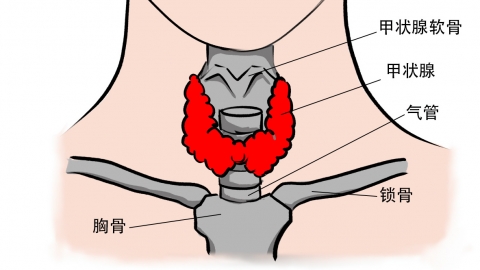How does subacute thyroiditis affect thyroid function?
Generally, subacute thyroiditis affects thyroid function through several processes, including viral destruction of thyroid follicles, massive release of thyroid hormones into the bloodstream, reduced hormone synthesis during follicular repair, inflammation-induced fluctuations in thyroid function, and long-term inflammatory damage to thyroid tissue. Detailed analysis is as follows:
1. Viral Destruction of Thyroid Follicles
Subacute thyroiditis is often triggered by viral infection, whereby the virus invades thyroid tissue and damages the structure of thyroid follicles. Thyroid follicles are essential sites for the synthesis and storage of thyroid hormones. When follicles are damaged, the normal storage mechanism of thyroid hormones may be affected.

2. Massive Release of Thyroid Hormones into the Bloodstream
Damaged thyroid follicles can no longer store thyroid hormones effectively. As a result, stored thyroid hormones are released in large quantities into the bloodstream. The sudden increase in circulating thyroid hormone levels beyond normal physiological needs can lead to hyperthyroidism, causing symptoms such as palpitations, excessive sweating, and hand tremors.
3. Reduced Hormone Synthesis During Thyroid Follicle Repair
As the disease progresses, the body initiates a repair mechanism to restore damaged thyroid follicles. During this repair phase, the functional capacity of follicular cells is not fully restored, resulting in impaired synthesis of thyroid hormones.
4. Inflammation-Induced Fluctuations in Thyroid Function
The inflammatory response in subacute thyroiditis is characterized by distinct phases. During the active inflammatory phase, significant follicular destruction leads to excessive hormone release. In the remission phase, follicular repair begins, accompanied by reduced hormone synthesis. These dynamic inflammatory changes can cause fluctuations in thyroid function between hyperthyroidism and hypothyroidism.
5. Long-Term Inflammation Leading to Thyroid Tissue Damage
If subacute thyroiditis persists or recurs repeatedly, long-term inflammation can cause ongoing damage to thyroid tissue. After extensive destruction of thyroid follicular cells, even with resolution of inflammation, the normal structure and function of the thyroid gland may not be fully restored, potentially resulting in long-term reduction in thyroid hormone production capacity.
In addition, patients with subacute thyroiditis should seek timely medical treatment to control inflammation and reduce thyroid tissue damage. Regular follow-up assessments of thyroid function during treatment are important for monitoring functional changes, enabling physicians to adjust therapeutic strategies and reduce the risk of long-term complications. Patients should also ensure adequate rest and avoid excessive fatigue to support recovery.






